Active Non-player Characters
Recommendations by Emily ShortGames which make use of non-player characters that have a great deal of independence, often moving around and acting on their own, or taking the lead in conversation. Some of these are more successful than others, but all are likely to be interesting to people developing their own complex independent agents.
View comments (2) - Add a comment
1. She's Got a Thing for a Spring, by Brent VanFossen (1997)
Average member rating:  (30 ratings)
(30 ratings)
Emily Short says:
One major character follows a detailed schedule and has numerous pieces of conversation available.
2. Kiss Chase, by Anonymous (2002)
Average member rating:  (7 ratings)
(7 ratings)
Emily Short says:
Small and silly, and not necessarily winnable on every play; characters run around trying to pair up, and the player does so as well.
3. The Battle of Walcot Keep, by Steve Breslin, Eric Eve, and Lindsey Hair (2004)
Average member rating:  (5 ratings)
(5 ratings)
Emily Short says:
A detailed battle simulation with numerous soldiers fighting one another; the player can't really intervene in all this, only watch the battle unfold. A demonstration of TADS 3's reactive agent planner extension.
 4. Mystery House Possessed
4. Mystery House Possessed
by Emily Short
(2005)
Average member rating:  (11 ratings)
(11 ratings)
Emily Short says:
One character is randomly selected to be the murderer and moves around the house killing people; others are trying to solve a hunt for jewels, and carry out their search through semi-randomized goal-seeking. (Disclaimer: one of my own games.)
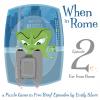 5. When in Rome 2: Far from Home
5. When in Rome 2: Far from Home
by Emily Short
(2006)
Average member rating:  (15 ratings)
(15 ratings)
Emily Short says:
Features a goal-seeking opponent whom the player must overcome in order to win. The opponent's features are randomly selected; some are more challenging than others. (Disclaimer: one of my own games.)
 6. Blighted Isle
6. Blighted Isle
by Eric Eve
(2007)
Average member rating:  (43 ratings)
(43 ratings)
Emily Short says:
A number of different characters have extensive conversation and agendas to carry out. It's possible for the player to align himself with different ones, bringing about an assortment of possible endings.
 7. The Elysium Enigma
7. The Elysium Enigma
by Eric Eve
(2006)
Average member rating:  (76 ratings)
(76 ratings)
Emily Short says:
Has one particularly effective conversational character, for which it was awarded Best NPC in its year.
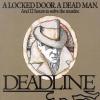 8. Deadline
8. Deadline
by Marc Blank
(1982)
Average member rating:  (54 ratings)
(54 ratings)
Emily Short says:
Though the NPC behavior is often scripted rather than flexible, there is a great deal here to observe: characters who move around the game at different times, perform actions that can be spied on, etc.
 9. Varicella
9. Varicella
by Adam Cadre
(1999)
Average member rating:  (127 ratings)
(127 ratings)
Emily Short says:
Similar to Deadline in having non-player characters who perform detailed scripts of action which the player can spy on (and through replaying learn to schedule).
10. Rematch, by Andrew D. Pontious (2000)
Average member rating:  (89 ratings)
(89 ratings)
Emily Short says:
Perhaps an odd choice for this list, but the characters in Rematch are able to accept and act on an unusually large selection of instructions, and thereby convey a fair amount of individual personality.
 11. The Hobbit
11. The Hobbit
by Philip Mitchell and Veronika Megler
(1983)
Average member rating:  (28 ratings)
(28 ratings)
Emily Short says:
Arguably overkill on the independent actions scale: characters do something every turn (even if just to say "Hurry up" to the player, which can get a bit old). It's also easy for the other characters to kill off monsters, etc., before the player even encounters them. Still, interesting to look at in this context.
 12. Bad Machine
12. Bad Machine
by Dan Shiovitz
(1998)
Average member rating:  (13 ratings)
(13 ratings)
Emily Short says:
Relies fairly extensively on characters who do goal-seeking; the robotic nature of their activities is excused here by the fact that they are, in fact, robots.
 13. Zork I
13. Zork I
by Marc Blank and Dave Lebling
(1980)
Average member rating:  (211 ratings)
(211 ratings)
Emily Short says:
In a fairly restrained way, but: Zork makes use of a thief character who wanders around the environment picking up things of value, which makes it perilous for the player to leave things around.
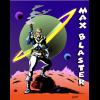 14. Max Blaster and Doris de Lightning Against the Parrot Creatures of Venus
14. Max Blaster and Doris de Lightning Against the Parrot Creatures of Venus
by Dan Shiovitz and Emily Short
(2003)
Average member rating:  (14 ratings)
(14 ratings)
Emily Short says:
Features two characters; the player can choose to control one, while the other continues as an active non-player. (Disclaimer: I helped write this game.)
 15. Earth And Sky 3: Luminous Horizon
15. Earth And Sky 3: Luminous Horizon
by Paul O'Brian
(2004)
Average member rating:  (40 ratings)
(40 ratings)
Emily Short says:
As in Max Blaster, the player can choose to manipulate one of two characters, while the other continues to be active and sometimes provide hints in overcoming puzzles.
 16. Child's Play
16. Child's Play
by Stephen Granade
(2006)
Average member rating:  (53 ratings)
(53 ratings)
Emily Short says:
At two levels -- there are adults having an ongoing conversation in the background throughout the game, and the other babies, some of whom have fairly sophisticated individual behavior.
 17. Four in One
17. Four in One
by J. Robinson Wheeler
(1998)
Average member rating:  (7 ratings)
(7 ratings)
Emily Short says:
The Marx brothers wander around and do their own thing. You may or may not be able to herd all the relevant cats, depending on how the randomization works out.
18. Kissing the Buddha's Feet, by Leon Lin (1996)
Average member rating:  (20 ratings)
(20 ratings)
Emily Short says:
You really need some quiet to study; unfortunately, your roommates are not helping. You need to eliminate their distractions.
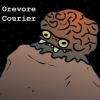 19. Orevore Courier
19. Orevore Courier
by Brian Rapp
(2007)
Average member rating:  (16 ratings)
(16 ratings)
Emily Short says:
The player is constrained to one place, able to watch and occasionally through mechanical means interfere in the behavior of those taking over his space ship.
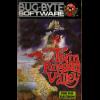 20. Twin Kingdom Valley
20. Twin Kingdom Valley
by Trevor Hall and P. M. Skinner
(1983)
Average member rating:  (7 ratings)
(7 ratings)
Emily Short says:
Not something I've played myself, but it has the reputation of being (like the Hobbit) long on independent NPC behavior.
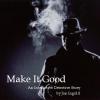 21. Make It Good
21. Make It Good
by Jon Ingold
(2009)
Average member rating:  (82 ratings)
(82 ratings)
Emily Short says:
Characters have memories, plans, and goals. You must manipulate them via your words and actions, and even the things you let them see you carrying. If you're not careful, one of them may take action against you, instead.
 22. Blue Lacuna
22. Blue Lacuna
by Aaron A. Reed
(2008)
Average member rating:  (106 ratings)
(106 ratings)
Emily Short says:
The major NPC Progue has many, many activities that he'll perform on his own, partly in reaction to the player, partly in order to achieve his own aims.
 23. The Baker of Shireton
23. The Baker of Shireton
by Hanon Ondricek
(2015)
Average member rating:  (18 ratings)
(18 ratings)
Emily Short says:
Dozens of characters enter and leave your scope of action, requesting things from you.
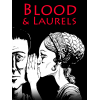 24. Blood & Laurels
24. Blood & Laurels
by Emily Short
(2014)
Average member rating:  (3 ratings)
(3 ratings)
Emily Short says:
Characters talk and perform social actions based on the same social model that generates potential actions for the player.
 25. A Family Supper
25. A Family Supper
by Emily Short, Richard Evans, Linden Lab
(2013)
Average member rating:  (2 ratings)
(2 ratings)
Emily Short says:
Characters talk and perform social actions based on the same social model that generates potential actions for the player. Built on the same system as Blood & Laurels, but with a less strong narrative structure and more freedom to wander from room to room.
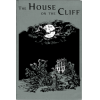 26. The House on the Cliff
26. The House on the Cliff
by Emily Short, Richard Evans, Linden Lab
(2013)
Average member rating:  (1 rating)
(1 rating)
Emily Short says:
Characters talk and perform social actions based on the same social model that generates potential actions for the player. Built on the same system as Blood & Laurels, but with an antagonist NPC modeled to move around invisibly and mess with the players' experience.
View this member's profile
See all lists by this member
Create your own Recommended List
 (30 ratings)
(30 ratings) (7 ratings)
(7 ratings) (5 ratings)
(5 ratings)4. Mystery House Possessed
 (11 ratings)
(11 ratings)5. When in Rome 2: Far from Home
 (15 ratings)
(15 ratings)6. Blighted Isle
 (43 ratings)
(43 ratings)7. The Elysium Enigma
 (76 ratings)
(76 ratings)8. Deadline
 (54 ratings)
(54 ratings)9. Varicella
 (127 ratings)
(127 ratings) (89 ratings)
(89 ratings)11. The Hobbit
 (28 ratings)
(28 ratings)12. Bad Machine
 (13 ratings)
(13 ratings)13. Zork I
 (211 ratings)
(211 ratings)14. Max Blaster and Doris de Lightning Against the Parrot Creatures of Venus
 (14 ratings)
(14 ratings)15. Earth And Sky 3: Luminous Horizon
 (40 ratings)
(40 ratings)16. Child's Play
 (53 ratings)
(53 ratings)17. Four in One
 (7 ratings)
(7 ratings) (20 ratings)
(20 ratings)19. Orevore Courier
 (16 ratings)
(16 ratings)20. Twin Kingdom Valley
 (7 ratings)
(7 ratings)21. Make It Good
 (82 ratings)
(82 ratings)22. Blue Lacuna
 (106 ratings)
(106 ratings)23. The Baker of Shireton
 (18 ratings)
(18 ratings)24. Blood & Laurels
 (3 ratings)
(3 ratings)25. A Family Supper
 (2 ratings)
(2 ratings)26. The House on the Cliff
 (1 rating)
(1 rating)